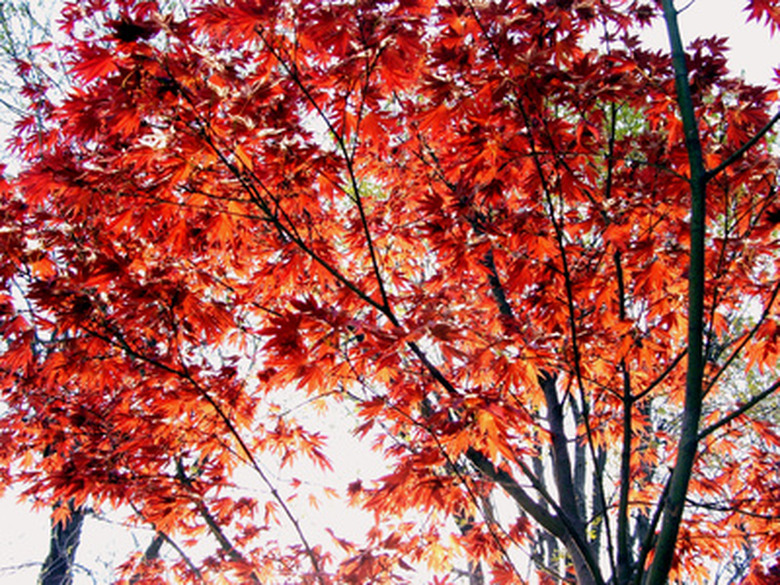Why Are Maple Leaves Red All Year Round?
Many, but not all, maple trees have their characteristic red leaves year round. The Japanese maple family, which includes six sub-species, is among the most well-known of the perennially red maples. These trees are native to Japan, Russia and China, but have become popular for their color, size and relative hardiness, and are bred and planted worldwide.
Japanese Maple or Acer Palmatum
Japanese Maple (or Acer Palmatum) is a popular and relatively common ornamental tree that is now found worldwide. Japanese maples reach heights of 20 to 50 feet and in their native environments, which are Japan, China, Russia, Korea, are often an understory plant (grows under larger trees) in shaded woodlands. They are prized as ornamental trees for their beautiful perennial red leaves.
Common Japanese Maple Cultivars
Common Japanese maple cultivars (varieties developed for commercial use) include Bloodgood, Butterfly, Golden Pond, Dissectum, Hupp's Swarf and Little Princess. Most of these commercial cultivars have been developed due to the popularity of the Japanese maple as an ornamental tree.
- Many, but not all, maple trees have their characteristic red leaves year round.
- These trees are native to Japan, Russia and China, but have become popular for their color, size and relative hardiness, and are bred and planted worldwide.
Why Japanese Maples Have Red Leaves Year Round
Japanese maples have their red leaves due to a low amount of chlorophyll and a high amount of the pigment anthocyanin present in the leaves. Japanese maples are by nature a low-chlorophyll understory tree, and anthocyanin is a nonphotosynthetic pigment that protects the leaves from sun damage, like UV radiation. So unlike trees that have green leaves most of the year and red/yellow/brown leaves in the fall, Japanese maples have reddish leaves year round.
Photosynthesis and the Chlorophyll Cycle
Despite the year-round red color of the leaves, Japanese maples do produce chlorophyll a and b like all photosynthetic plants, but only in relatively small quantities. And Japanese maples do carry out photosynthesis like all other trees. You can easily confirm this fact by covering with a paper bag a small branch with a few leaves of a Japanese maple and coming back to check 24 hours later. The leaves will have started to turn from ruddy red to pale green, especially at the veins as the plant switches to a high-chlorophyll cycle to try to produce more energy. It should be noted that Japanese maples have a slow metabolism and are a slow-growing plant related to their low chlorophyll production.
- Japanese maples have their red leaves due to a low amount of chlorophyll and a high amount of the pigment anthocyanin present in the leaves.
- Despite the year-round red color of the leaves, Japanese maples do produce chlorophyll a and b like all photosynthetic plants, but only in relatively small quantities.
Sugar Maple
The Sugar maple, or Acer saccarum, is the species of tree that grows commonly in Vermont and the Eastern United States. It is used to produce maple syrup. The Sugar maple has red leaves, but only seasonally, as the leaves turn yellow-brown in the fall.
